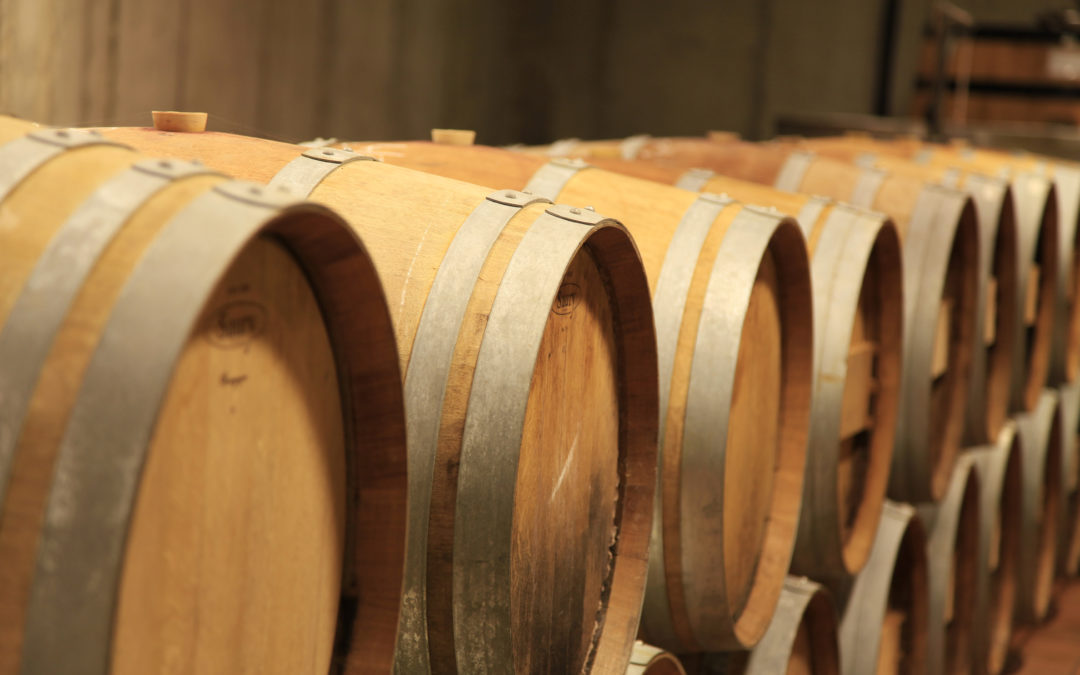Before there was wine, there was a peninsula.
When the glaciers receded from the Great Lakes region over 10,000 years ago, they exposed a uniquely carved bay measuring 32 miles long and 10 miles wide – Grand Traverse Bay. In the middle of this bay the glaciers left a 19-mile long peninsula, with rolling terrain, and more importantly for today’s Old Mission Peninsula wine industry, rich, fertile soil, and a climate ideal for farming.
Before Europeans settled the Old Mission Peninsula, Native Americans inhabited the land, concentrating on the northern tip near what is now the Old Mission Village. The tribes took advantage of the moderate climate to cultivate corn, pumpkins, beans, and potatoes in small gardens. Trading with other tribes to the south, they also obtained apple seeds, and by the time early European settlers came to the Peninsula, apple trees were already flourishing in their small gardens.
According to the terms of the Treaty of 1836, the government was to provide the Indians with missions, schools, and Indian reservations. In 1839, Reverend Peter Dougherty was sent to the Grand Traverse region to establish a church and school for the tribes that resided there. By the fall of 1841 there was a schoolhouse, four dwellings, several wigwams at the settlement, and Dougherty’s home that he constructed.
During that next decade, European settlers began to migrate to the peninsula and the settlement had grown to a considerable size. In 1852, Dougherty and the tribes made the decision to move the mission across West Grand Traverse Bay to an existing Native American village on Leelanau Peninsula, at the site of modern Omena, Michigan. They gave their new mission the name, “New Mission” and the previous community was therefore dubbed “Old Mission.”
Supported by a climate and soil that were favorably suited for fruit production, agriculture played an important role in the lives of the early European settlers. Doughtery is credited with planting the first cherry trees on the peninsula. Much to his and everyone’s surprise, the trees flourished, and thus began the history of the Grand Traverse area as the “Cherry Capital of the World.”
To support the increase in agriculture production along with vacationers who were drawn by the peninsula’s beauty, boat traffic increased on the bay. Large sailing vessels and steamships carried passengers and agricultural products to and from the natural harbors found at Old Mission and Bower’s Harbor where large docks were built to accommodate these ships. Settlers were moving
in at a rapid pace and applying for their patent deeds.
By 1881, many of the original homesteaders were well established on the Peninsula. Following Dougherty’s example, many of these farmsteads planted cherries, along with apples and plums. The first commercial cherry orchards in Michigan were planted in 1893 not far from the site of Dougherty’s original plantings.
By the early 1900s, the tart cherry industry was firmly established all along Grand Traverse Bay, including Old Mission Peninsula, and cherry farming replaced the lumber industry, which had died off in the late 19th century.
Grape growing and winemaking entered the picture three-quarters of a century later. Edward O’Keefe, Jr., recognized how well cherries and other fruits thrived in the sandy soil of Old Mission Peninsula. He suspected – much to the ridicule of naysayers – that that same soil and the microclimate that existed on the peninsula could prove to be as useful for viticulture. He was right.
In 1974, O’Keefe put the Old Mission Peninsula on a path to recognition as one of the premier wine growing areas in Michigan when he planted grape varieties of Chardonnay, Pinot Noir, and Riesling, and opened Old Mission Peninsula’s first winery, Chateau Grand Traverse.
In 1987, the Old Mission Peninsula received its American Viticultural Areas (AVA) designation as
a federally recognized wine growing region.
SINCE THEN, NINE ADDITIONAL WINERIES HAVE JOINED THE RANKS ALONGSIDE CHATEAU GRAND TRAVERSE:
1 Peninsula Cellars was founded in 1994 by the Kroupa family on their 150-year-old farm.
2 The Begin family – Robert, Nadine, and daughter, Marie-Chantal – opened Chateau Chantal’s doors in 1993 upon the completion of a French-style three-room B&B, winery, and vineyard estate.
3 Bowers Harbor Vineyards began in the early 1990s by the Stegenga family, who grew grapes for Chateau Grand Traverse. They started their own winery in the vineyard’s second year of growth.
4 Brys Estate Vineyard and Winery planted 40,000 vines in stages beginning in 2001.
5 2 Lads Winery established its winery and tasting room on an existing vineyard site in 2007.
6 Black Star Farms opened its winery and tasting room on Old Mission Peninsula in 2007.
7 Hawthorne Vineyards, began as an 80-acre farm partially planted to vines, cherries, and plums.
It opened its tasting room in 2013.
8 Mari Vineyards, is home to more than 50 acres of vineyards planted entirely on the Old Mission Peninsula. It opened its tasting room in 2016.
10 Tabone Vineyards is an estate vineyard that debuted on Old Mission Peninsula in 2019.

